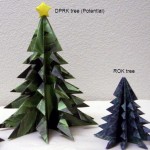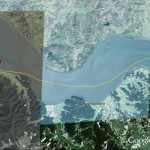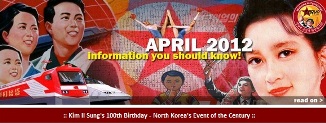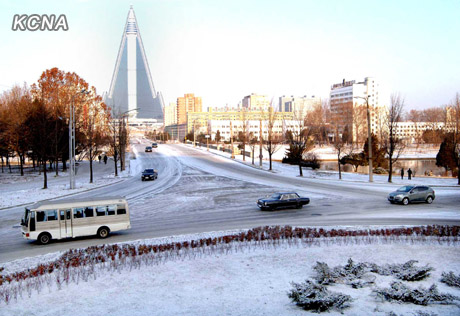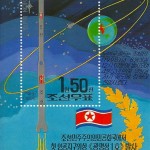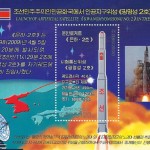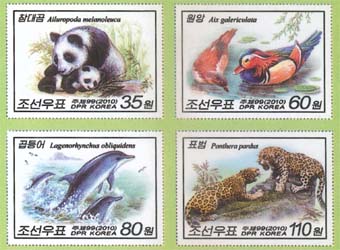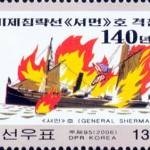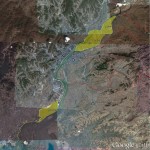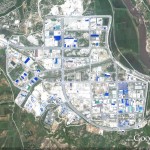UPDATE 1 (2011-12-20): Due to the announcement of Kim Jong-il’s death on December 19, the lighting of the Christmas trees was cancelled.
ORIGINAL POST (BELOW):
Pictured above: How the DPRK should have responded to South Korean Christmas Trees
Last year I wrote a blog post about the large “Christmas tree” a South Korean church was erecting on a hilltop tower across the Han River from Jogang-ri, in Kaesong (37.752445°, 126.593120°). Here is a satellite image (Google Earth) of the location:
This year, the South Korean government again rewarded the church with permission to raise the “Christmas tree”, and again, Pyongyang was not happy:
The North’s official website, Uriminzokkiri, called the plan “a mean attempt for psychological warfare” against the communist state and threatened to retaliate immediately if the lights are switched on.
…
The tree-shaped, 30-meter-high steel structure is illuminated by thousands of small light bulbs and can be seen from the North’s major city of Kaesong just north of the border, according to media reports.
“The enemy warmongers… should be aware that they should be held responsible entirely for any unexpected consequences that may be caused by their scheme,” it said.
“This issue… is not something to be ignored quietly,” it said.
My parents taught me that if someone is trying to annoy me–I should just ignore them. Showing irritation will only invite further harassment. The DPRK chose to ignore this wisdom, and as a result, the South Koreans approved the construction of two additional “Christmas trees” along the border (three in total now). According to the Associated Press (via the Washigton Post):
The South Korean government allowed a Christian group to light a massive steel Christmas tree near the border last year for the first time in seven years as tensions flared in the wake of two deadly attacks blamed on the North.
That tree will be lit again this month, while South Korea has also decided to allow other Christian groups to light two other front-line Christmas trees, a Defense Ministry official said.
The decision is meant to help guarantee freedom of expression and religion, the official said on condition of anonymity, citing office policy.
…
South Korea’s military will bolster security near the three trees, located on the western, central and eastern portions of the border, the Defense Ministry official said. The trees will stay lit for 15 days starting Dec. 23.
So Christmas trees are increasing military tension along the DMZ. Fantastic. Since it is the holiday season, however, and we should all be feeling good about each other, etc., I wanted to offer the DPRK a more appropriate tactic to respond to the the South’s new “psychological warfare” techniques. The DPRK already has one of the world’s tallest flag support structures erected near Panmunjom (The 160 meter edifice is technically not a flag pole)…why not just cover it in lights and put a big red star on top? It could even be powered with electricity from the Kaesong Industrial Complex (provided by the South). No South Korean organization could compete. The DPRK would win…it would have the “Tallest Christmas Tree in the World”! Of course, this would be escalation of a different sort. The South Koreans would respond somehow…but the outcome would be preferable to military escalation!
Happy holidays and happy new year!
